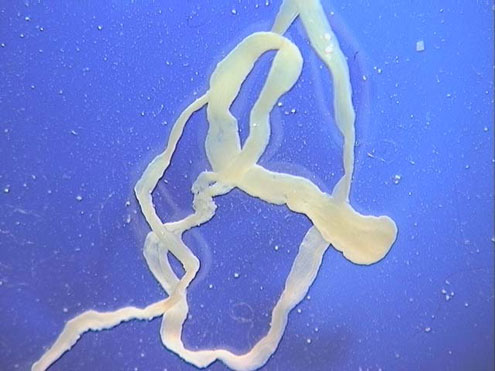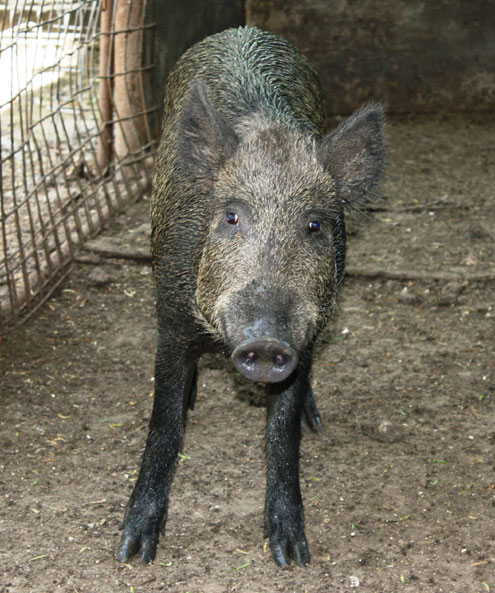Parasites, such as hookworms can be found in feral hogs
COLLEGE STATION – With a proliferation of feral hogs in Texas, control measures such as trapping and hunting can yield the rewards of good table fare. However, feral hogs can carry parasites, such as hookworms, and experts advise to use safe cooking practices before consuming the meat.
“Feral hogs are destructive in nature and their daily patterns include both feeding and fighting,” said Dr. Tom Hairgrove, Texas A&M AgriLife Extension Service specialist in College Station. “They fight off other feral hogs in their daily activities of searching for food and can incur lesions or open wounds. This may create openings for parasites and lead to infections, discoloring the meat, etc. That’s why it’s good for those who process feral hogs to be on the lookout for any abnormalities and use safe practices when processing the meat.”
Though not an endemic problem, the bobcat tapeworm, Spirometra mansonide, can be found in both wild and domestic cats, according to experts. They are more prevalent in Gulf Coast areas and hosts, such as feral hogs, can come into contact by consuming contaminated water.
“Pigs can be infected by drinking water with the intermediate host copepods or things that eat copepods like tadpoles,” said Dr. Tom Craig, professor emeritus and Texas Veterinary Medical Diagnostic Laboratory scientist in College Station. “Tadpoles grow up to become frogs or toads, which are eaten by snakes. Eating any of these can infect pigs or people who carry the larval stage. Cats, dogs or raccoons eating any of the above have the adult tapeworms in the intestine.”

As spring approaches, feral hog activity will begin to pick up as female sounders will be searching for food and raising newborns. That will lead to more feral hog activity in general and trapping control activities.
For those who choose to harvest feral hogs, experts advise to use precautions. Before processing, wear protective equipment and gear such as latex gloves since parasites or blood infections could be present.
“Any wild game, including feral hogs, should be cooked thoroughly to 160 degrees internal temperature at the center of the whole muscle cut and ground meat product as measured with a food thermometer,” said Dr. Dan Hale, AgriLife Extension meat specialist in College Station.
Experts advise those with any questions about feral hogs or processing to contact their AgriLife Extension county offices.
